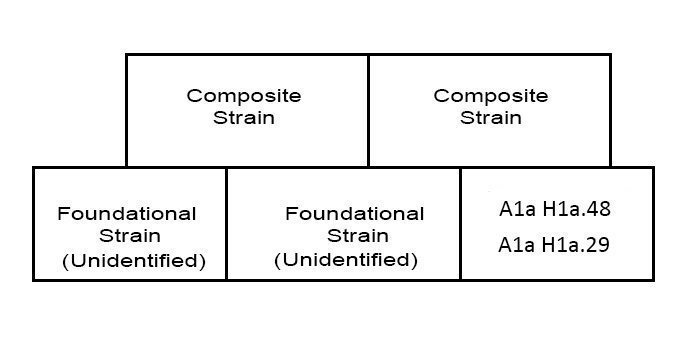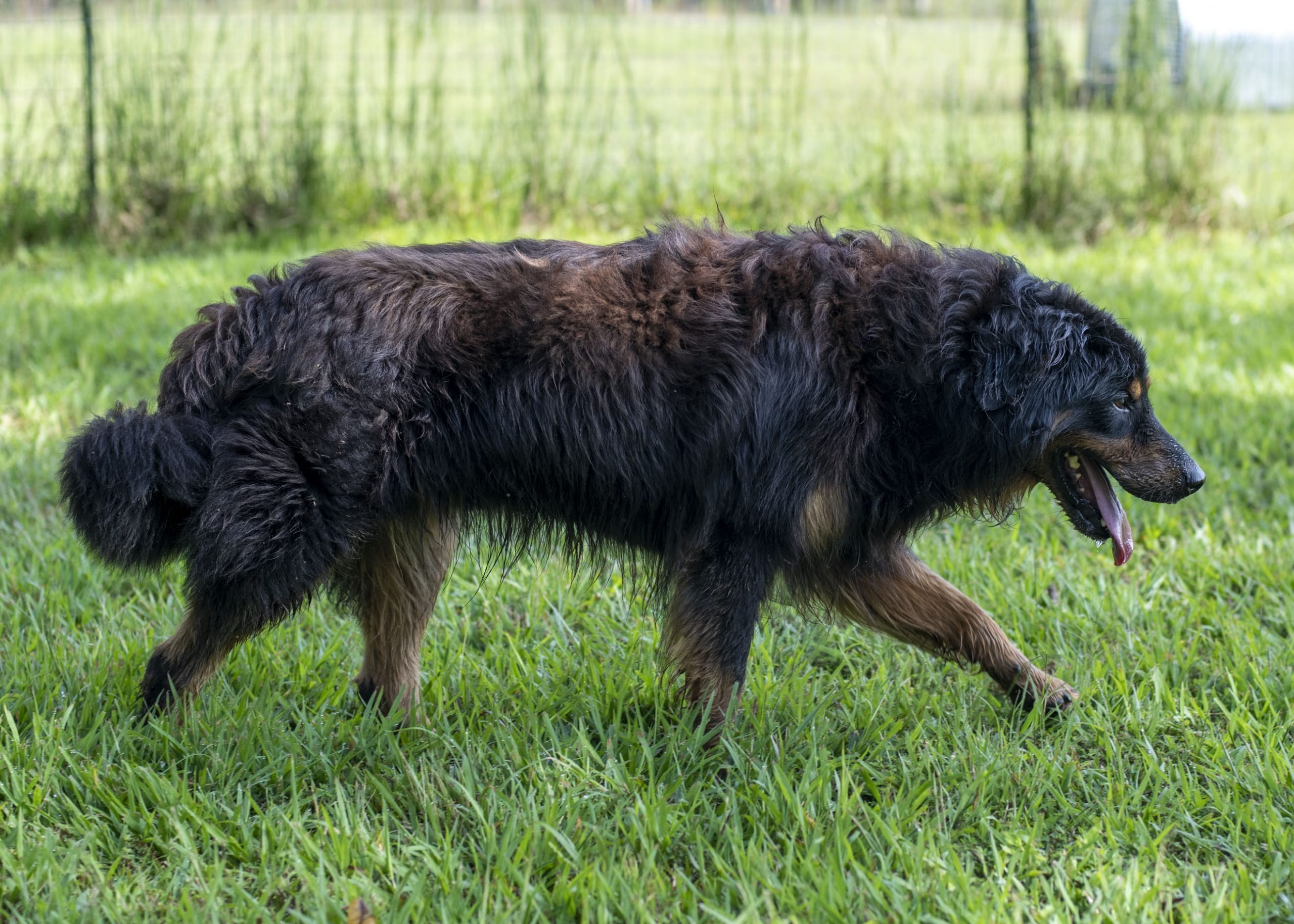I was recently asked, “What exactly makes it a Old-fashioned Black and Tan English Shepherd?”
When classifying members of a foundational strain within a landrace breed, three of the most conclusive tools we can use are genotype, phenotype and history. In isolation, any one of these three investigations can be inconclusive. But when all three are used together, we can assert a classification with a reasonable amount of confidence.
Phenotype
It is documented that Tom Stodghill and his wife visited Middle Tennessee in the mid to late 1940’s. While visiting, the Stodghills met with well-known Old-fashioned Black and Tan English Shepherd breeders John and Polly Blankenship of Christiana, Tennessee. They also acquired black and tan English shepherds from the rural breeders of Rutherford County and the surrounding area.[1]English Shepherd Club of America Who’s Who Breeder Manual, pages 6-7 A few years later, Stodghill founded the English Shepherd Club of America and wrote the English Shepherd Standard[2]The breed standard is also published in Stodghill’s Animal Research Magazine on pages 10-11 of the Spring-Summer 1969 Edition for Dog World magazine.[3]English Shepherd Club of America Who’s Who Breeder Manual, page 15 His article established the phenotype for the Old-fashioned Black and Tan English Shepherd dogs he acquired in Tennessee and used as breed stock.[4]“Stodghill’s Beautiful” is most likely one of the dogs Stodghill acquired while in Middle Tennesee. Stodghill’s Beautiful can be found in the English Shepherd Club Registry … Continue reading
History
The history[5]The Old-fashioned Black and Tan English Shepherd, Farm Shepherds Illustrated of the Old-fashioned Black and Tan English Shepherd is documented by the people of Middle Tennessee. Through their letters from fifty, seventy-five and even almost a hundred years ago,[6]Black and Tan Shepherd Farm Dogs In Use Prior to 1900, Farm Shepherds Illustrated we can read about their lives and experiences working with and living with Old-fashioned Black and Tan English Shepherds.[7]English Shepherd Club of America Who’s Who Breeder Manual, multiple letters by multiple authors[8]The Book of Ole Shep Volume 1, by Tony Bierman
Genetic Analysis
Haplotypes are particular DNA sequences that are inherited entirely from a dog’s mom (maternal) or dad (paternal).
Because they are inherited whole, a dog and his or her mom share the exact same maternal haplotype. If it is a male dog, he and his dad share the exact same paternal haplotype. (female dogs don’t inherit paternal haplotypes).
Similarly, haplogroups are groups of similar DNA sequences (haplotypes) that are inherited entirely from the mother (maternal) or father (paternal) and don’t get shuffled up like other parts of your dog’s genome.
Because most foundational strains in a landrace breed were started with only a few individual dogs, those foundational strains are dominated by only one or a few haplotypes.

Through the use of haplogroups and haplotypes, we can identify descendants of the Old-fashioned Black and Tan English Shepherd. So far, we’ve learned that the most prevalent paternal haplogroup/haplotypes for the Old-fashioned Black and Tan English Shepherd are A1a H1a.48 and A1a H1a.29.
References
| ↑1 | English Shepherd Club of America Who’s Who Breeder Manual, pages 6-7 |
|---|---|
| ↑2 | The breed standard is also published in Stodghill’s Animal Research Magazine on pages 10-11 of the Spring-Summer 1969 Edition |
| ↑3 | English Shepherd Club of America Who’s Who Breeder Manual, page 15 |
| ↑4 | “Stodghill’s Beautiful” is most likely one of the dogs Stodghill acquired while in Middle Tennesee. Stodghill’s Beautiful can be found in the English Shepherd Club Registry with the attached note: “Apparently one of the dogs that was given the okay by Stodghill as a ‘true’ b&t ES, but not registered. The words ‘approved quality’ appear under the name John Bozo on the ESCOA (ARF) pedigree for Watson of Jamesburg” |
| ↑5 | The Old-fashioned Black and Tan English Shepherd, Farm Shepherds Illustrated |
| ↑6 | Black and Tan Shepherd Farm Dogs In Use Prior to 1900, Farm Shepherds Illustrated |
| ↑7 | English Shepherd Club of America Who’s Who Breeder Manual, multiple letters by multiple authors |
| ↑8 | The Book of Ole Shep Volume 1, by Tony Bierman |


3 thoughts on “What Exactly Makes It a Old-fashioned Black and Tan English Shepherd?”
Comments are closed.